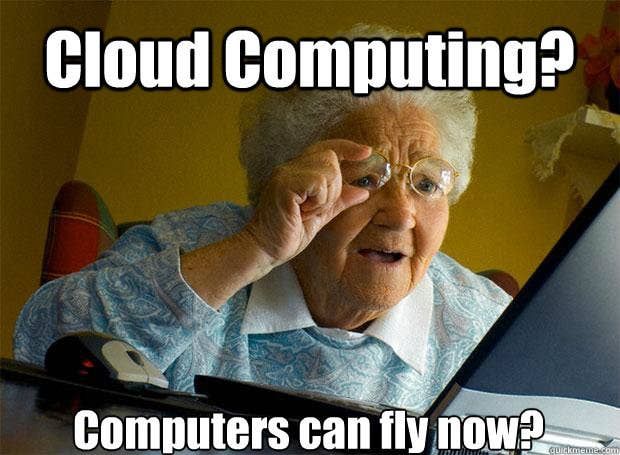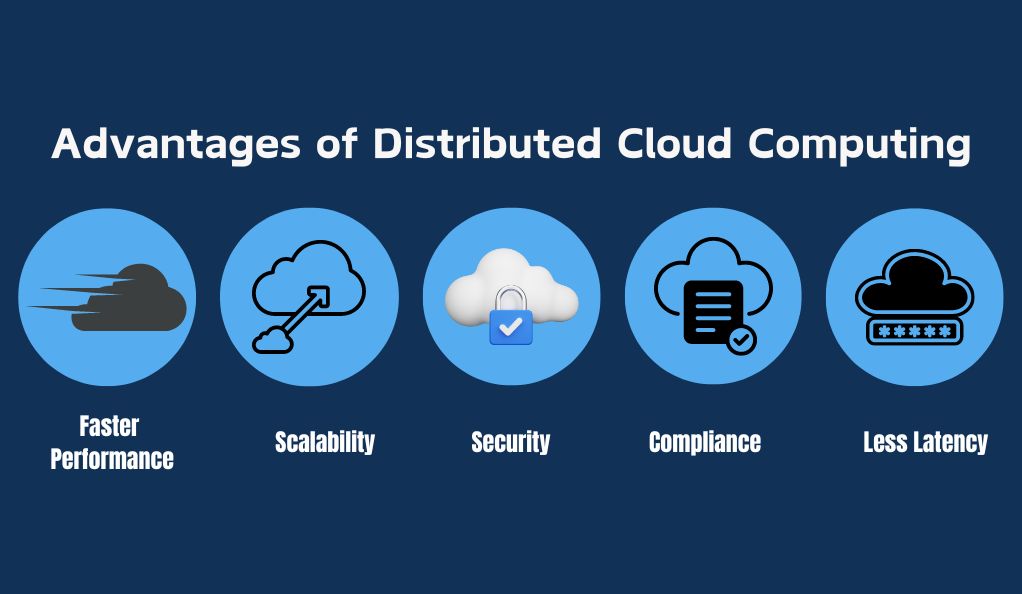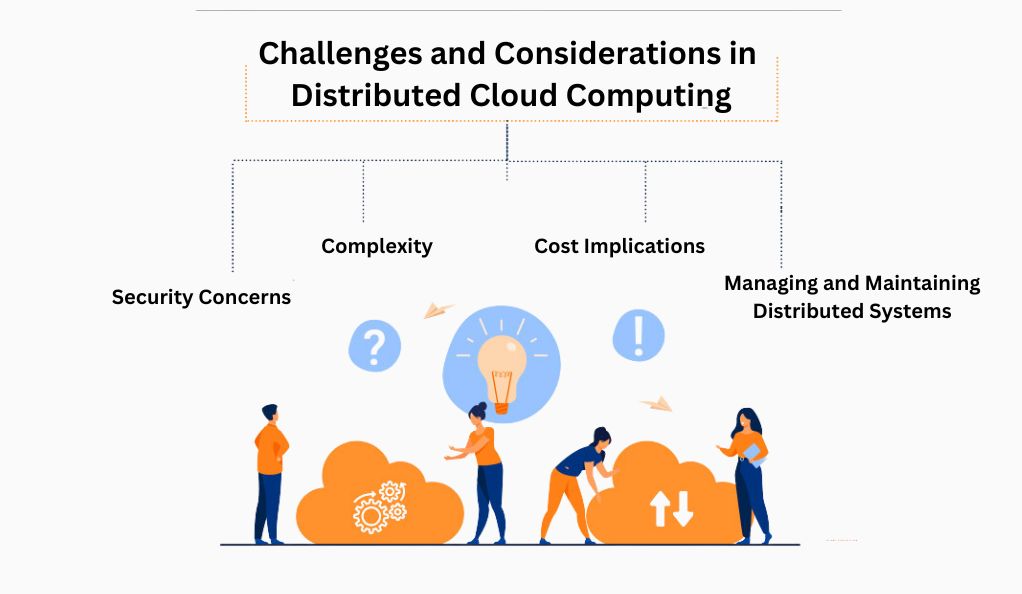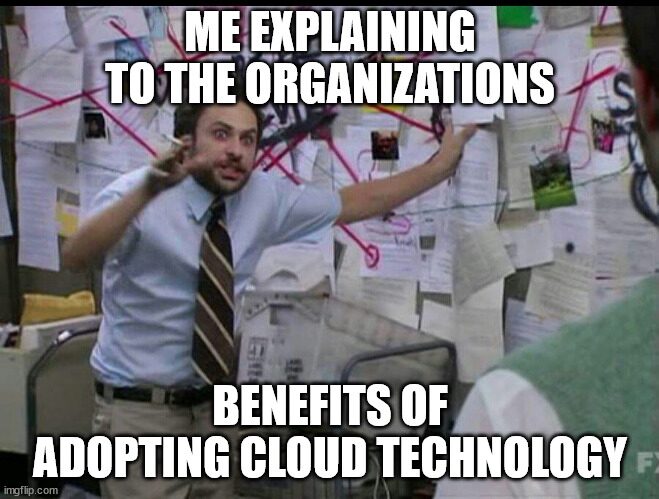Exploring the World of Distributed Cloud Computing
Distributed Cloud Computing is a modern technology that changes how we use the internet and handle data. Imagine a big cloud, like the ones you see in the sky, but filled with data and computer services. Now, instead of this cloud being in one place, it’s spread out in many different locations. That’s what Distributed Cloud Computing is. It’s like having several small clouds in different places that all work together as one big cloud.
This technology is important because it lets people and companies access computer services and store data across different places, not just in one spot. This means that no matter where you are, you can quickly and easily use these services and access your data.
The Evolution of Cloud Computing to Distributed Models
In the past, cloud computing was like a big warehouse where all the data and services were stored in one place. But as more people and companies started using these services, it became clear that having everything in one place could be a problem. Sometimes, it could be slow, or there might be rules in some places about where data can be stored.
So, the idea of distributed cloud computing came up. It’s like having many smaller warehouses in different locations instead of one big one. This change means that the services are closer to the people using them, making everything faster and more reliable. It also helps follow local rules about data storage.

The Mechanics of Distributed Cloud Computing
Distributed Cloud Computing works in a really smart way. Think of it like a team of friends working together on a big project. Instead of one friend doing all the work, they split it up and work on different parts at the same time. This is similar to how Distributed Cloud Computing splits up computer tasks across many locations.
How Distributed Cloud Computing Works
- Splitting the Task: In Distributed Cloud Computing, a big task is broken into smaller parts. Each part is then sent to different computers in various locations to be worked on. This is like having many helpers in different places doing bits of the job.
- Working Together: All these computers are connected over the internet. They talk to each other and work together to complete the task. It’s like each computer is a player in a big team game, where each one has a specific role.
- Finishing the Task: Once all the parts are done, they are put together. The final result is sent back to you, just like how all the parts of a puzzle are put together to see the whole picture.
Key Components and Architecture
- Computers in Different Locations: These are like different stations where the work happens. They can be in different cities or even countries.
- Network Connections: This is what allows all these computers to talk to each other. It’s like a bunch of roads connecting different towns.
- Central Management: There’s a main control center that keeps an eye on everything. This center makes sure all the parts are working well together.
Advantages of Distributed Cloud Computing
Distributed Cloud Computing is like having a team of superheroes, each with different powers, working together. This way of doing cloud computing has many benefits, making it a great choice for businesses and individuals.
Enhanced Performance and Scalability
Imagine you’re at a busy restaurant. If there’s only one chef, your order might take a long time. But what if there were several chefs, each cooking a part of your meal at the same time? Your food would be ready much faster. Distributed Cloud Computing works the same way. It divides the tasks among many computers, so everything gets done quicker.
- Speed: With computers in different places, data doesn’t have to travel far. This means faster access and quicker responses.
- Growth: Just like adding more chefs in the kitchen to handle more orders, you can add more computers to handle more work. This makes it easy for businesses to grow.
Improved Data Security and Compliance
Keeping data safe and following the rules are big deals in the digital world. Distributed Cloud Computing helps a lot with these:
- Better Security: It’s harder for hackers to attack many small systems than one big one. So, spreading out the data makes it safer.
- Following Local Laws: Different places have different rules about data. Distributed Cloud Computing can store data in the right place to follow these rules.
Reduced Latency and Real-time Data Processing
Latency is like waiting for a delayed video to load. In Distributed Cloud Computing, the data is closer to where it’s needed. This reduces delay and allows for real-time processing. For example, in online gaming, this means faster and smoother gameplay with less waiting.
To sum up, the advantages of Distributed Cloud Computing are:

- Faster Performance: Like a team working together, it gets things done quickly.
- Scalability: It grows with your needs, just like adding more helpers.
- Security: It’s like having many smaller, safer vaults instead of one big one.
- Compliance: It follows rules easily by keeping data in the right places.
- Less Latency: It reduces delays, making things like games and videos run smoother.
Distributed Cloud Computing in Action
Distributed Cloud Computing is not just an idea; it’s being used right now in many interesting ways. It’s like having a toolbox where each tool does a different job, helping to solve various problems.
Real-world Applications and Use Cases
In the real world, Distributed Cloud Computing is like a team of helpers in different places, each doing a specific job to make our lives easier. Here are some examples of how it’s being used:
- Online Shopping: Big online stores use distributed cloud to handle lots of shoppers at the same time. It’s like having many cash registers open, so everyone can check out quickly.
- Streaming Movies: When you watch movies online, distributed cloud helps stream the video smoothly without buffering. It’s like having multiple movie projectors, so everyone gets a clear picture.
- Smart Cities: In smart cities, distributed cloud helps manage traffic lights, public transport, and more. It’s like having eyes and ears all over the city to keep things running smoothly.
Case Studies of Successful Deployments
- Global Bank: A big bank used distributed cloud to keep its data safe and quickly accessible from different countries. It’s like having many secure vaults around the world.
- Healthcare Provider: A hospital network used distributed cloud for storing patient records and medical research data. This made it easier for doctors to access information fast and securely.
- Retail Chain: A chain of stores used distributed cloud to manage stock levels and sales data across all their locations. It’s like having a super-smart inventory system that knows what’s in every store.
Challenges and Considerations in Distributed Cloud Computing
Even though Distributed Cloud Computing is like a superhero team, it still faces some tough challenges. It’s important to understand these challenges to make the best use of this technology.

Security Concerns in a Distributed Environment
Distributed Cloud Computing scatters data across multiple locations, akin to treasure spread across islands. This enhances security by requiring robust protection for each computer in various locales. Moreover, safeguarding data during transfers becomes vital, akin to securing cash transported between banks in an armored van. The distributed nature adds layers of defense, making it challenging for attackers to compromise the entire system.
Complexity and Cost Implications
Distributed Cloud Computing can be complex and expensive. It’s like having many different teams working in different places. Each team needs the right tools and training, and coordinating all of them can be tricky.
- Setting Up: Getting all the computers and connections ready in different locations can be costly and complicated.
- Maintenance: Keeping everything running smoothly across all these locations requires constant care and sometimes fixing unexpected problems.
Managing and Maintaining Distributed Systems
Managing a distributed cloud system is like being a coach of many sports teams in different places. You have to make sure each team is doing well and playing by the rules.
- Coordination: Keeping all parts of the system working together is a big task.
- Updates and Upgrades: Regularly updating and upgrading the system in all locations to keep it running at its best.
The Future of Distributed Cloud Computing
Distributed Cloud Computing is like a fast-growing tree, always branching out into new areas. It’s exciting to think about what the future holds for this technology.

Emerging Trends and Innovations
The world of Distributed Cloud Computing is always changing, with new ideas popping up like new flavors at an ice cream shop. Here are some trends to watch for:
- More Automation: In the future, managing distributed clouds could become more automated. It’s like having robots help run things smoothly.
- Greener Technology: There’s a big push to make technology more environmentally friendly. Distributed clouds might use less energy, like electric cars instead of gas ones.
- Edge Computing: This is a special kind of distributed cloud that processes data right where it’s collected, like having a mini-computer in your smartwatch.
Predictions for Distributed Cloud Computing’s Role in Future Technology
- Smarter Cities: Distributed clouds could help make cities smarter, managing everything from traffic to pollution levels.
- Healthcare Advances: They could help doctors get patient information faster and even support remote surgeries.
- Gaming and Entertainment: Imagine even more realistic online games and interactive movies, all thanks to faster and more powerful distributed clouds.
Conclusion
Distributed Cloud Computing, much like a perfectly assembled puzzle, creates a comprehensive and dynamic picture of modern technology. It’s a transformative approach that distributes computing across various locations, enhancing speed, security, and efficiency. This technology marks a significant leap forward, akin to the transition from walking to flying, propelling our capabilities to new heights.
It prepares us for a future brimming with potential, poised to revolutionize our daily lives, professional environments, and leisure activities. More than just a trend, Distributed Cloud Computing is a game-changer, progressively reshaping our digital landscape. As we look ahead, it stands as a testament to the evolving synergy between technology and human ingenuity, a partnership that promises to simplify our lives and amplify our aspirations.


Leave a Reply